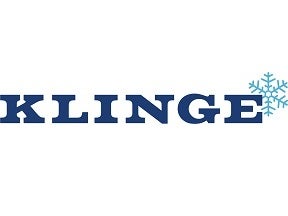Logipharma interviews Klinge Corporation’s vice-president Allan Klinge to discuss important themes affecting pharmaceutical logistics.
How long have you been working in pharmaceutical logistics?
Klinge Corporation made its first series of Dual Refrigeration System Containers for refrigerated container transport in 1978. The units designed especially for companies needing to safety transport highly valuable or temperature-sensitive chemicals and pharmaceuticals. Building on the success of our Dual Refrigeration System, we have designed a special Dual Freezer System Container, which keeps supplies frozen to -65°C. We also offer Blast Freezers, which quickly freeze to -60°C and Freezer Systems for cold storage rooms.
What challenges have some of your customers faced and what advice can you offer companies, which wish to remain compliant while controlling costs?
When discussing pharmaceutical cold chain, the largest costs are typically packaging and airfreight. The cost can easily be reduced and controlled by using ocean transport in refrigerated shipping containers or reefers. This is a cost-efficient and reliable solution particularly when compared to air freight, where our customers have informed us that there are quite a few temperature excursions. Our complete Refrigerated Container system feature dual refrigeration systems, back-up power supple, and a GSM/satellite monitoring and temperature recording system to fully safeguard cold chains supplies.
All of these built-in fail safes have given customers the peace of mind to transport valuable and temperature sensitive cargo and to avoid the devastation of a temperature deviation.
Can you tell us how you have helped your customers in ensuring they are compliant?
The focus for compliance has been on offering redundancy and remote tracking to allow for complete temperature records during the voyage or when being stored at a facility. The fact that Klinge’s system is an active cooling system instead of a passive system, such as dry ice or phase change material, further aids in ensuring that the temperature preservation of the product will continue uninterrupted and is not dependant on a person remembering to constantly check or replace the passive cooling elements.
How can heads of logistics, distribution, and supply chain encourage buy-in from key stakeholders across the business?
Ocean transport for high-value goods requiring refrigeration is a viable, cost-efficient, and most importantly reliable option. The system is comprised of a shipping container with two full-capacity refrigeration systems, where the refrigeration unit automatically switches to its back-up in case of emergency. Klinge Corporation’s Dual Refrigeration System Containers give pharmaceutical companies peace of mind as the risk of temperature deviations are essentially zero.
This allows all stakeholders to be sure that they will improve the bottom line through use of the equipment and through reduction of costly temperature deviations.
Klinge’s systems are also being used for on-site storage in case of catastrophic plant shutdowns, which could impact on-site freezer storage or in the case of higher than expected production suns. So, facility management teams and production teams can also benefit from the equipment.
How do you manage extreme environments during shipment?
Klinge Corporation has decades of experience transporting goods in extreme temperatures. A case in point is the United Kingdom’s Antarctic operation, which purchased Klinge Corporation’s Dual Refrigerated Container System through Raytheon Polar Services Company, to store and transport ice core samples from Antarctica to the United States.
Valued at several millions of dollars, the ice core samples were kept at their required temperature in Klinge Corporation’s Dual Refrigerated Containers from McMurdo Station in the South Pole, across the equator, and to the National Ice Core Laboratory in Colorado. A second shipment was also conducted from the UK Rothera Station in the South Pole, across the equator, and to a research lab at Ohio University.
In terms of high-temperature, Klinge manufactures equipment for militaries around the world, where high-ambient temperature operation is often a requirement and has incorporated lessons learned from these projects across its product lines.
What are the specific requirements for temperature monitoring?
The EU Good Distribution Practice requires "Records of temperature monitoring data should be available for review. There should be defined intervals for checking temperature. The equipment used for monitoring should be checked at suitable predetermined intervals and the results of such checks should be recorded and retained".
In response to the data recording requirements for pharmaceuticals, Klinge Corporation offers a microcontroller-based Datalogger (also known as temperature recorder) for precise and independent temperature measuring and logging.
The recorders provide evidence of correct temperatures for every trip in the form of a delivery ticket or numerical or graphical printout. All data is stored with a date and time stamp in a large flash memory. Data will not be lost if power supply is disconnected. The real-time clock is powered by an internet back-up battery. A GSM module is also available specifically for this unit, as well as other GSM and satellite tracking and temperature recording options – all with programmable alarm functions contacting users via email or SMS.
As a leading cold chain provider, what lessons have you learnt?
We have learned that customers are ready for a higher quality reliable method of transporting and storing pharmaceuticals. We have also learned the importance of data management and ability to quickly and easily review the status of an entire fleet of containers during transport.
Klinge Corporation has been serving the industry for more than 30 years and provides a robust solution, which addresses the critical areas of refrigerated transport:
- Keeping pharmaceuticals at their required temperature to -65°C
- Recording and logging temperature data
- Monitoring temperature on a global basis and providing alarm indications, which allows customers to react quickly to any possibly developing issue.
A temperature deviation can result in the loss of millions of dollars. Klinge Corporation’s robust Refrigerated and Freezer Containers diminish this risk and ensure cold chain supplies are kept at their required temperature, even in the most extreme climates.

